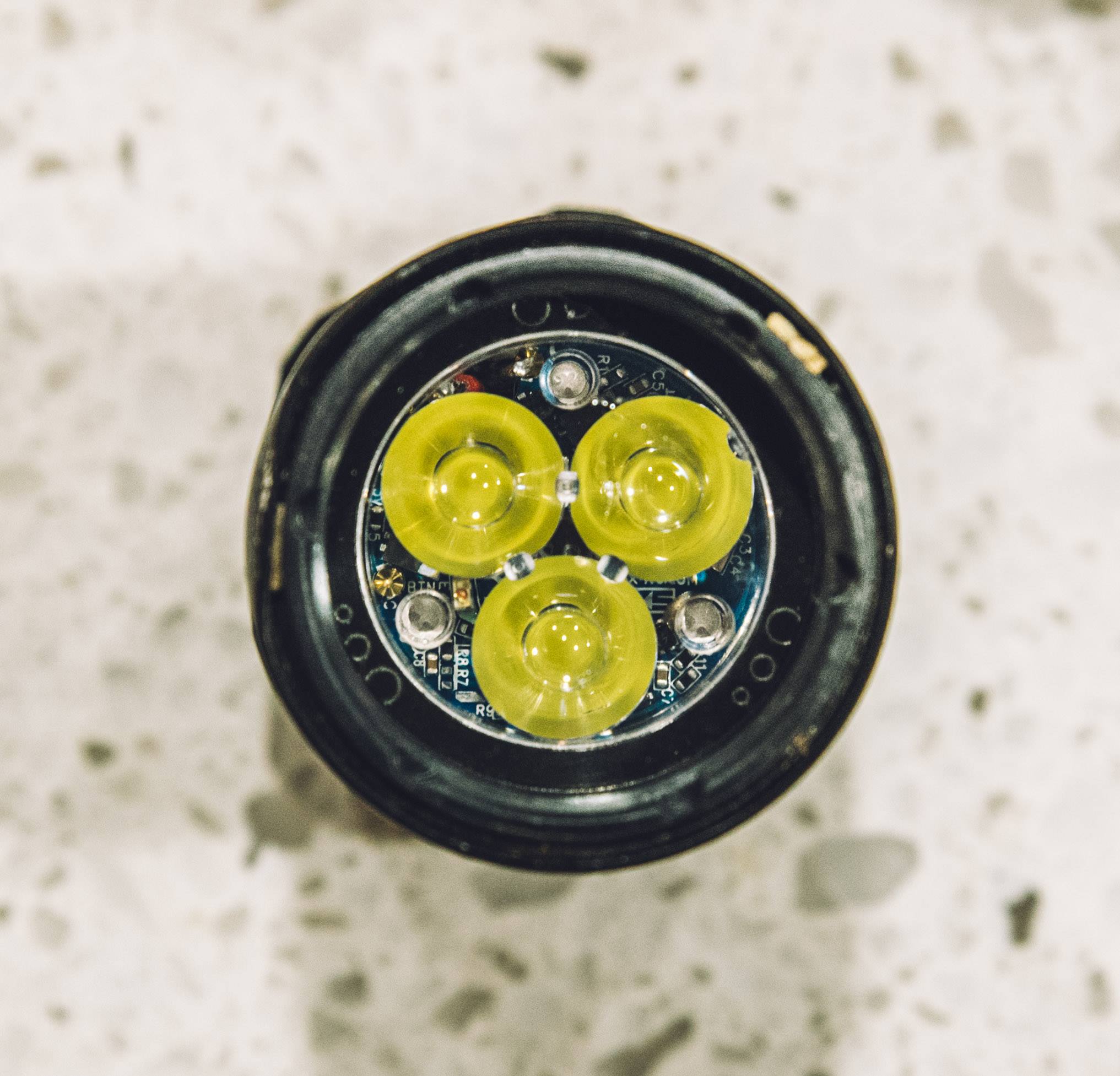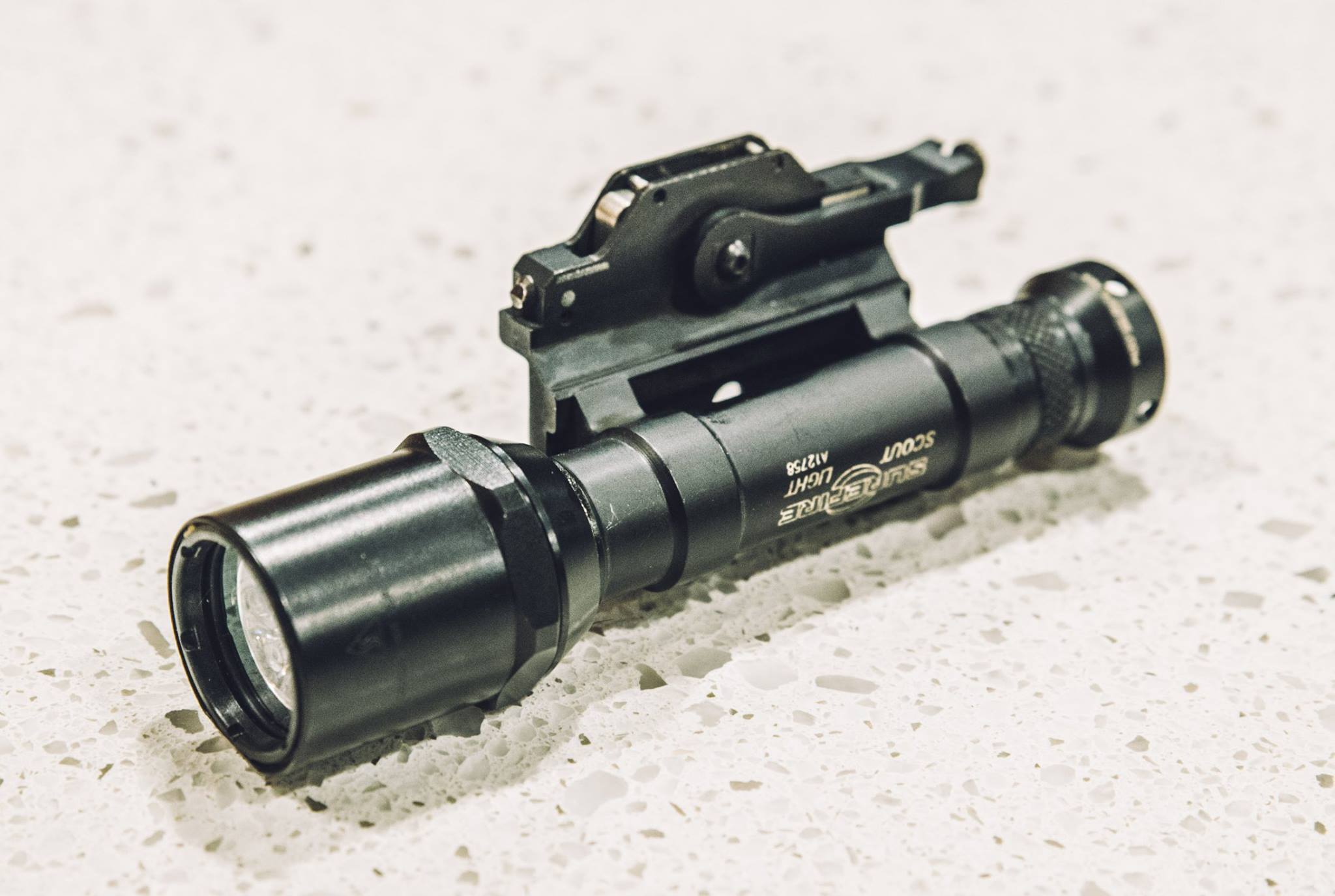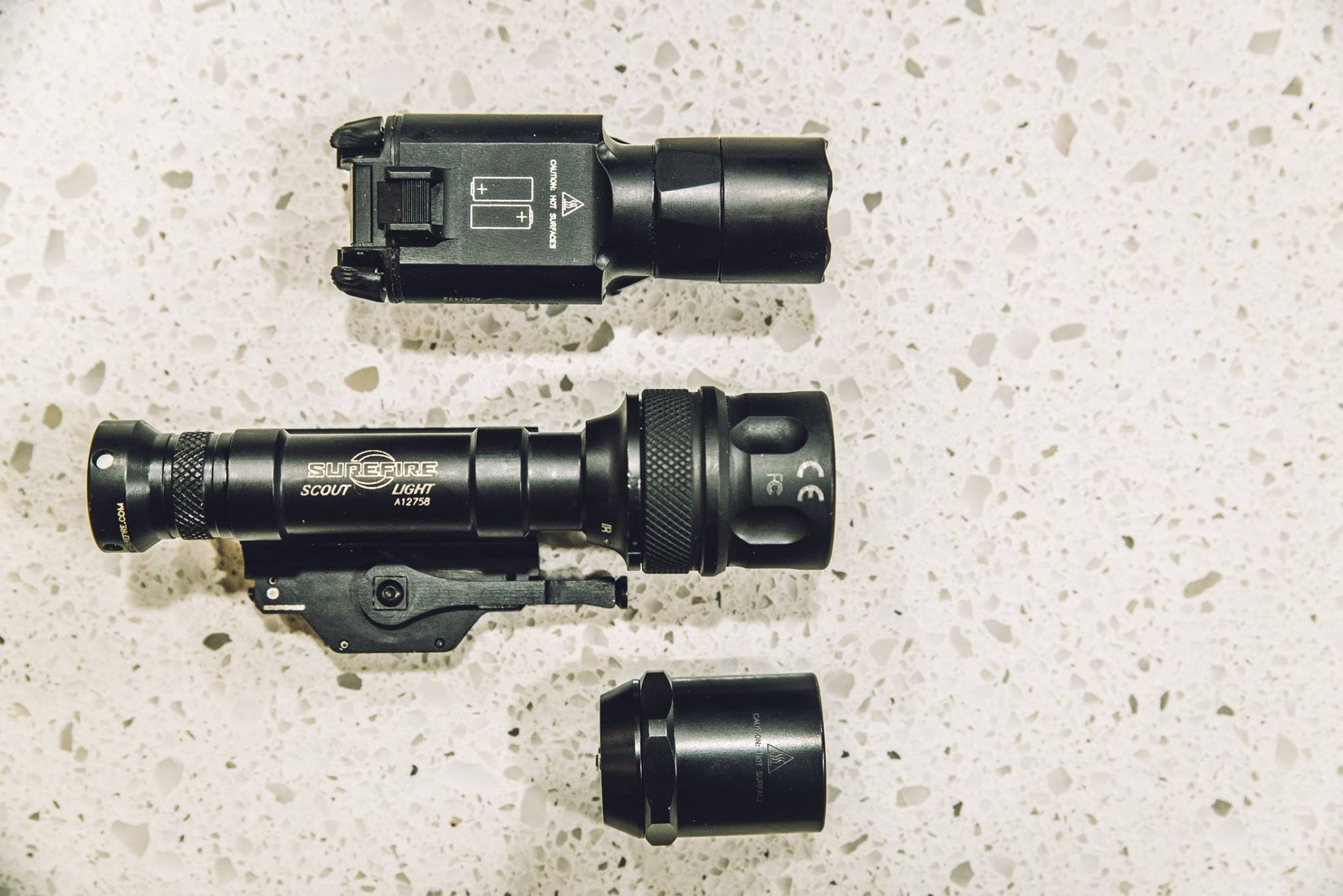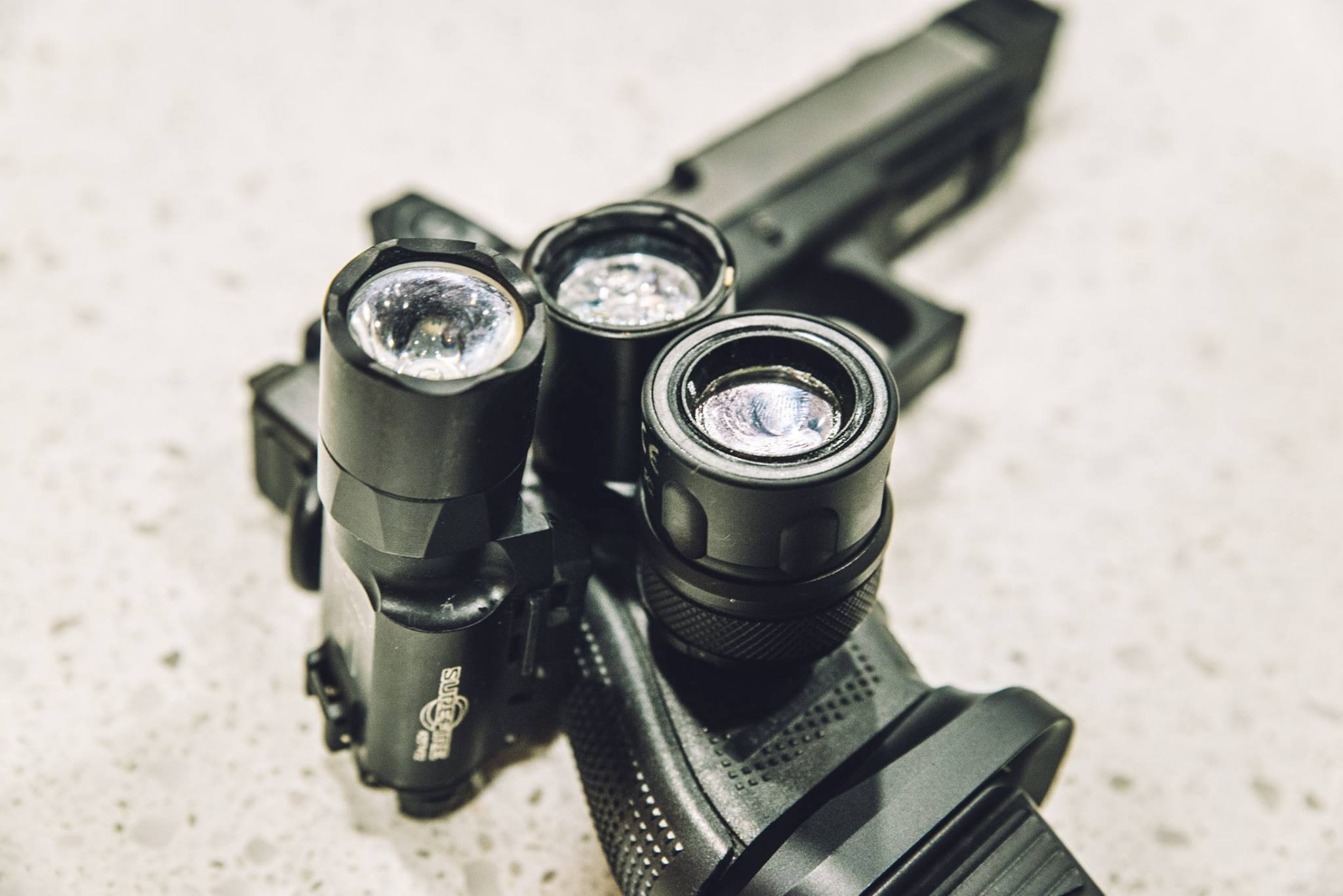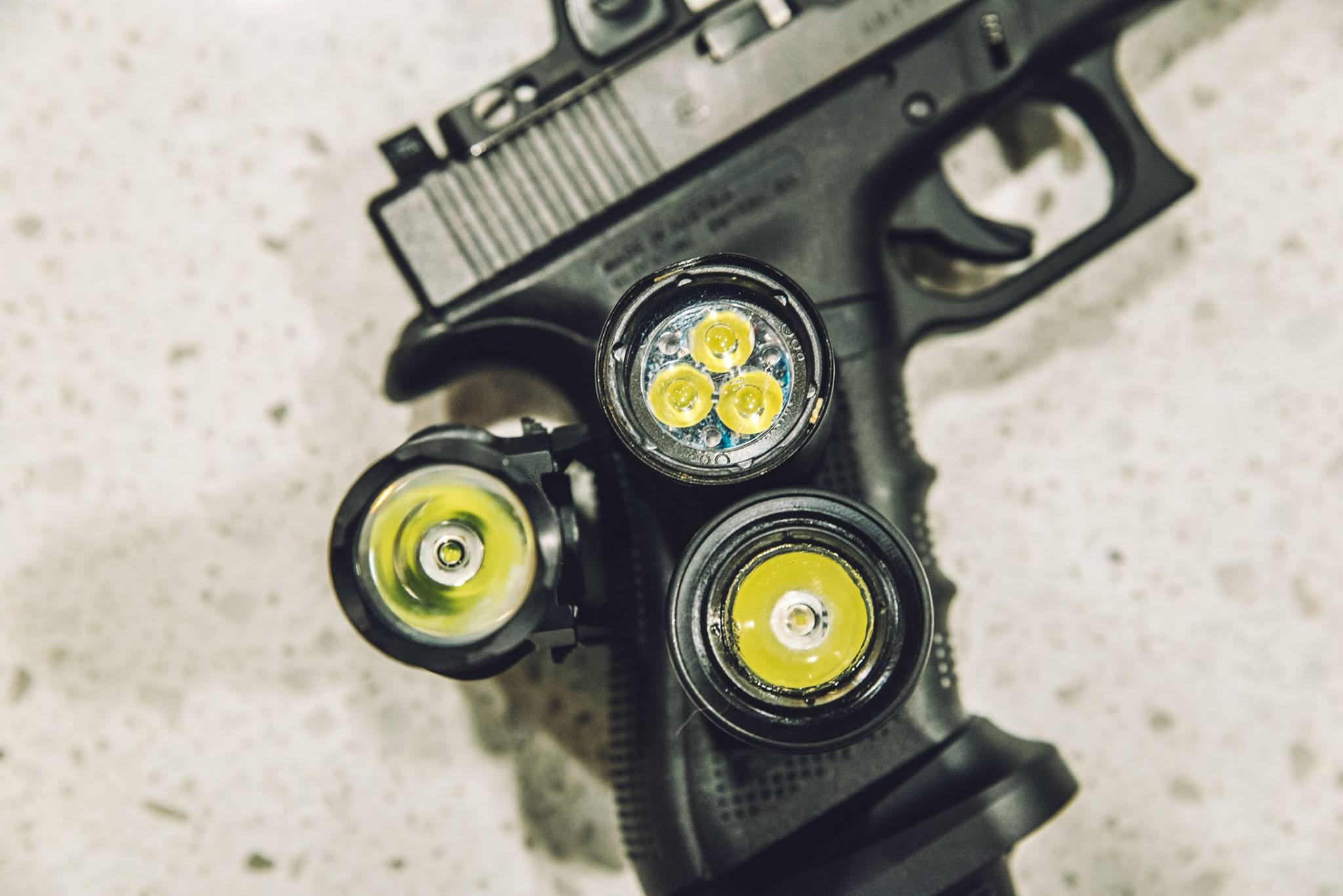An employee at NiteCore sent me a few of their products recently to take a look at, primarily the CI7 (see eye seven), a charger and the picatinny rail mount for it. This is an interesting new dual-spectrum LED flashlight that boasts some of the highest published near-infrared output numbers. By rotating the head, you can switch between four visible and NIR LED emitters, and with the buttons on the tailcap you can dial the power output up and down.
One interesting characteristic of this illuminator is its use of 940nm-wavelength emitters, versus the typical 840-850nm as found in many other devices. When selecting an NIR illuminator, lower wavelengths are closer to the visible spectrum of light and therefore more easily noticed by the unaided eye. Where the color red tops out just over 700nm, near infrared takes over and goes up to 1000nm with quickly decreasing ability for humans to perceive. By choosing emitters with a higher wavelength further from the visible spectrum, less signature exists from the target’s perspective, in theory allowing a higher degree of stealth.
In the sketch below you’ll see where those different bands exist along the line of wavelengths. Many thermal cameras have visibility in the 1500-5000nm range, covering some of SWIR and most of MWIR. Image intensifier tubes like in the typical PVS-14 device (green or white phosphor makes no difference) can see and intensify visible colored light up into the near infrared range, topping out between 900-1000nm. There is a fair amount of variability from tube to tube though, so while one manufacturer’s I2 tube may see a low powered 950nm source, another may be completely blind to it. To combat this borderline visibility condition, NiteCore has decided to pump way more energy out of the device than most other manufacturers and lists it as 7 Watts, as compared to 0.6 Watts on the well-liked DBAL-D2 that also uses an LED.
I brought the CI7 to the range alongside a number of other flashlights and near infrared illuminators to compare visible performance, night vision illumination performance and visibility of the 940nm beam to the naked eye. Let’s start with the video below that shows the NIR LED illuminator in the CI7 on a dark range out to about 200m at the trees. You’ll see the CI7 has a very wide illuminating spread, more suitable for closer ranges than long ones. I say this mostly because of the situations where the wide beam would splash on near obstructions or terrain and cause the NV tubes to dim down, preventing good visibility at distance. If the head was somehow focusable, it would be a much more effective device for spotting at distance.
Next you’ll see the illuminators from the target’s perspective, from 25m away. Note that these are not directly indicative of the view to the naked eye, as the digital camera is more sensitive to these wavelengths than the eye. I only show them as a comparison to show how much brighter/dimmer each device is when related to each other. You’ll notice that even though the CI7 has a higher wavelength beam, it is still much more visible when in its full power setting, almost 12 times as much energy as the DBAL.
Finally, you’ll see below the visible light beam patterns of a handful of different weapon/handheld flashlights. You’ll notice the NiteCore beam is extremely wide and illuminates much of the foreground, but also has a strong punch in the center for distance. This is more acceptable in a visible light, as our eyes have a wider dynamic range and are able to see both the hotspot and any bright foreground splashes simultaneously.
I’ll let others comment on the build quality and ruggedness of the device itself, but I was not concerned with it during my time using the light. I thought the ‘intelligent’ features in the tailcap were nice, displaying battery level as well as being able to set and remember power settings. The remote tapeswitch also had an intelligent on/off so that the tape and the button at the back of the light would still function independent of each other.
While the picatinny mount had lower quality screws and hardware, it clamped fine to rails. In my usage I ended up shining it much more handheld though off the gun.
If seeking an ‘out-of-band’ illuminator with less visibility from the target side, you’re going to need more output power to give a similarly bright illumination downrange, and this added power comes with extra visibility. I would think sticking with the lower wavelengths and having longer battery life would be more preferable. For those in situations where signature from the target’s view is of utmost concern, laser-based illuminators offer advantages in their ability to focus precisely that would make them a better option than the LED devices.
This is an unpaid summary of my thoughts about a product I did not pay for. I do not have a professional relationship with NiteCore.


